Cooling system and backplate
The special feature is the use of a hybrid system that can be operated both in a water cooling system and only alone with air cooling. The advantage is that the buyer does not lose any warranty claims due to a cooler change if he wants to upgrade to water cooling later (perhaps).
| Cooling system at a glance | |
|---|---|
| Type of cooler: | Hybrid cooler for optional air or water cooling |
| Heatsink: | Copper Heatsink with mounting frame Water cooling by lying, U-shaped pipe for water flow No micro-channels or other contact cooling |
| Cooling fins: | Aluminum, horizontal alignment very close low depth |
| Heatpipes | 2x 8mm, flat and nickel-plated |
| VRM cooling: | integrated in the Heatsink only MOSFETs are cooled |
| RAM cooling | via mounting frame on the heatsink |
| Fan: | 2x 10 cm fan modules (gross) 9.6 cm rotor diameter 13 rotor blades, optimized for static pressure semi-passive lyrised |
| Backplate | Aluminum, blackened internally foiled no cooling function with backlit logo |
The backplate is purely for optical enhancement and bears the ROG logo. It does not pay any amount for cooling.
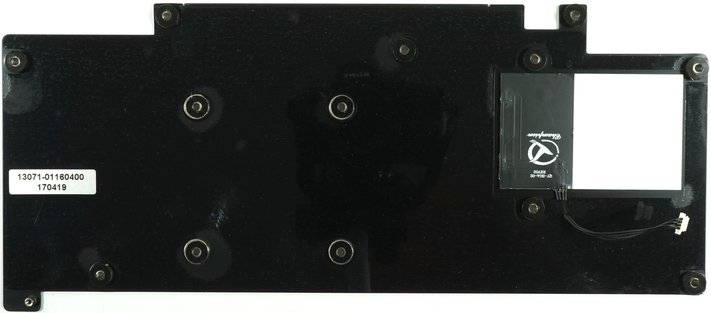
The heat sink relies on a copper heat sink, which can also be used as a cooling block for water cooling by means of a flooded heat exchange pipe. The standard thread connections can be used on the front and rear. However, it must be expected that the very narrow tube greatly reduces water flow, depending on the cooling concept.
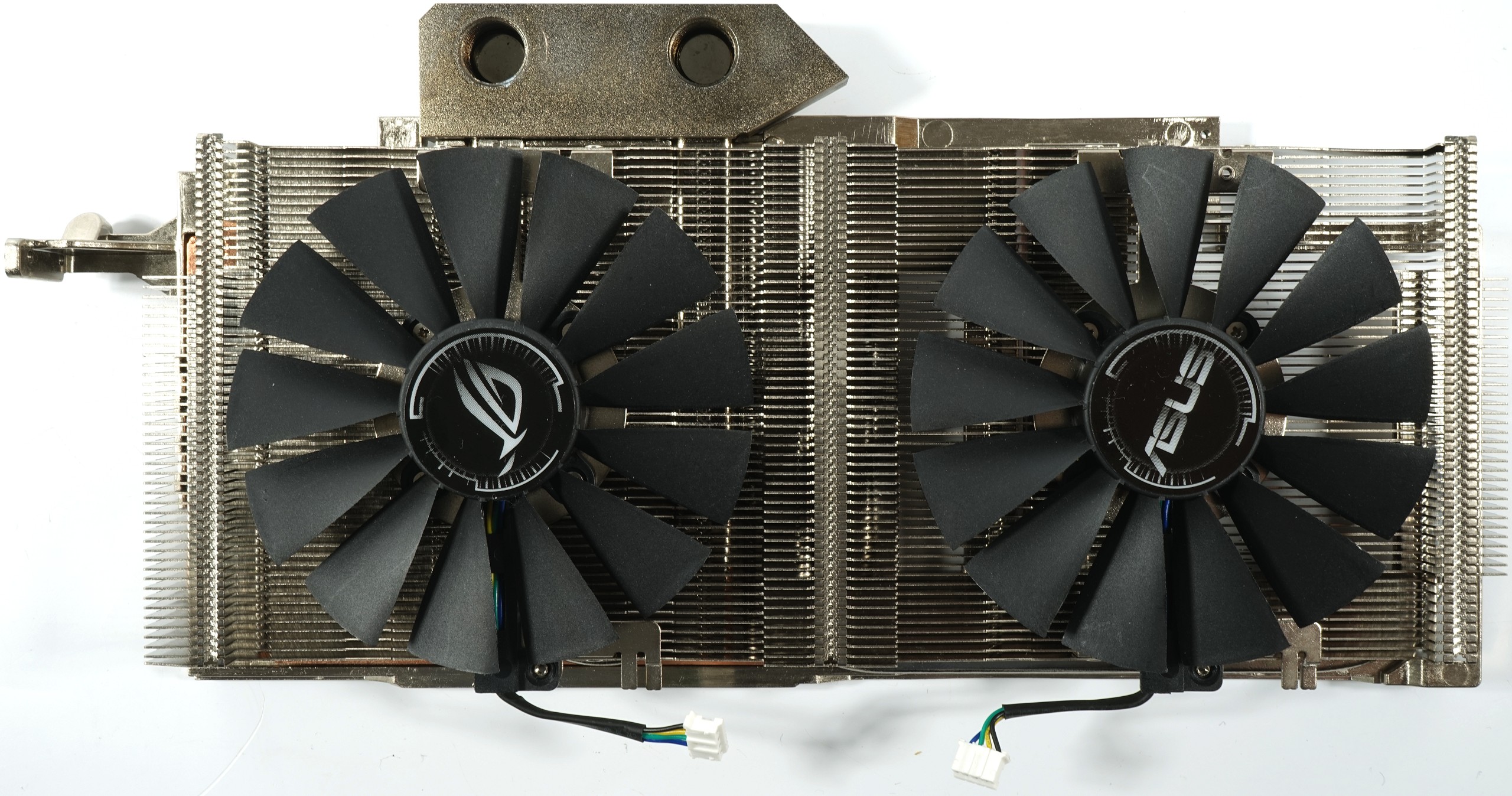
Similar to a vapor chamber, the heatsink is large-scale and is additionally thermally connected to the rest of the slat cooler via two additional heatpipes.
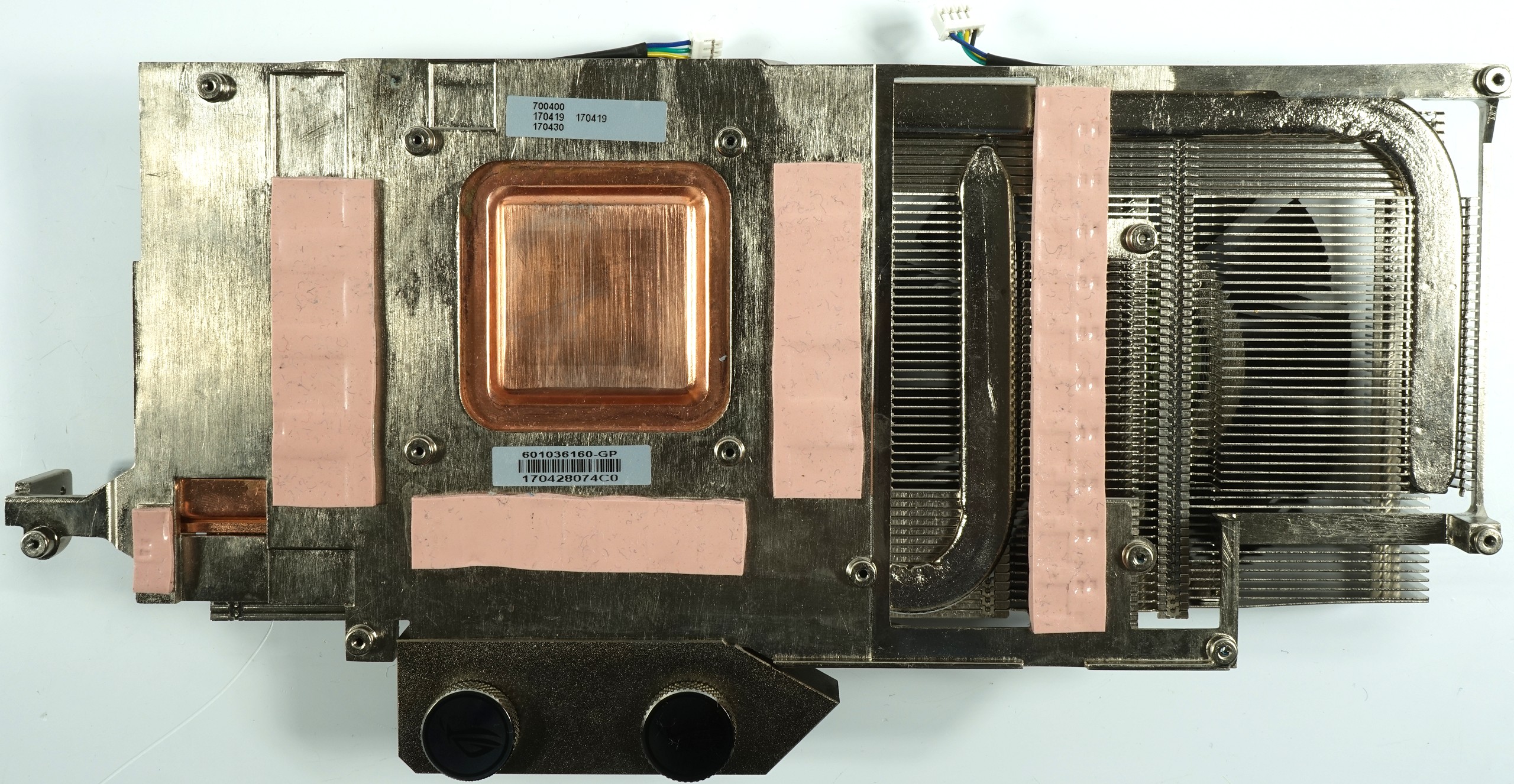
The internal radii of the heatpipes are very tight and not optimally worked in terms of quality. In addition, such trivially flattened designs are very quickly prone to performance degradation in the flow inside.
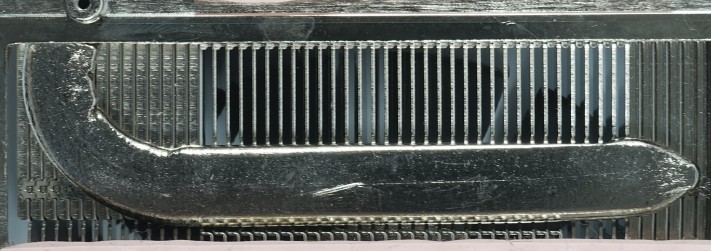
Fan curves and noise emission ("volume")
The fan curves indicate a conservative and volume-optimized control.
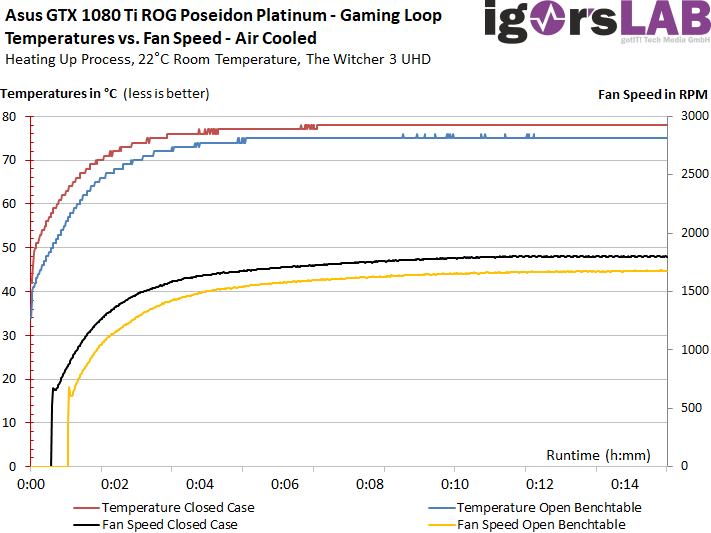
| Measurements for fans and noise emission |
|
|---|---|
| Fan speeds Open Benchtable Maximum |
1884 rpm |
| Fan speeds Open Benchtable Average |
1631 rpm |
| Fan Speeds Closed Case Maximum | 1801 rpm |
| Fan Speeds Closed Case Average | 1822 rpm |
| Noise emission (air) Maximum |
41.8 dB(A) |
| Noise Emission (Air) Average |
41.2 dB(A) |
| Noise Emission (Air) Idle | 0 dB(A) |
| Sound characteristic / Hearing impression |
low-frequency bearing noise audible engine noise< 1 Hz broadband bearing noise (clackers) hardly spool-feathers audible air/demolition noises |
To illustrate our subjective audio impression once again, we now have a high-resolution graphic with the complete frequency spectrum of our laboratory measurement:
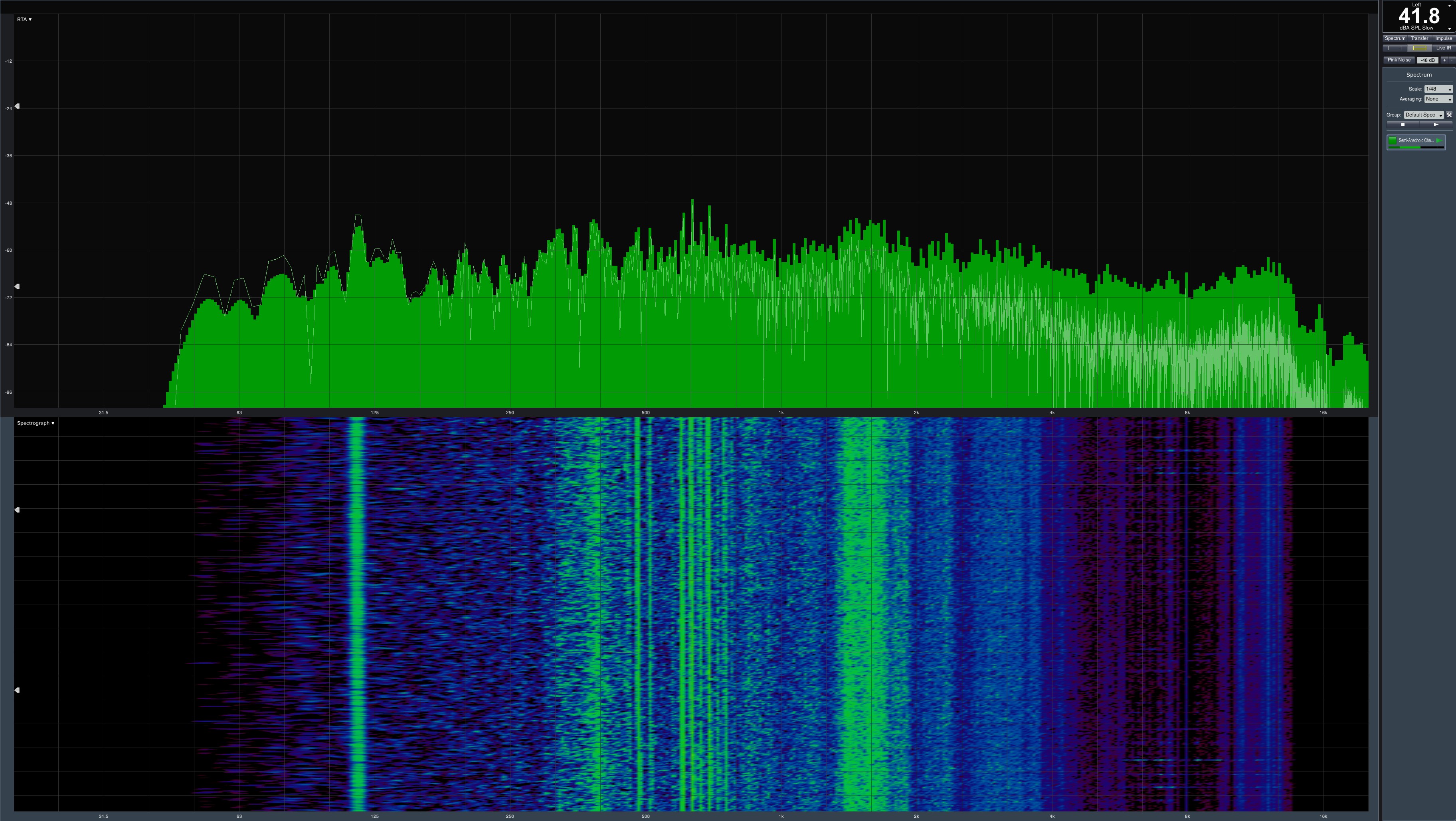
- 1 - Einführung und Übersicht
- 2 - Platine und Spannungsversorgung im Detail
- 3 - Gaming Performance: 2560 x 1440 Pixel (WQHD)
- 4 - Gaming-Performance: 3840 x 2160 Pixel (Ultra-HD)
- 5 - Leistungsaufnahme Im Detail
- 6 - Temperaturen, Taktraten, OC und Wärmebildanalyse
- 7 - Kühlerdetails und Geräuschentwicklung
- 8 - Zusammenfassung und Fazit
































Kommentieren